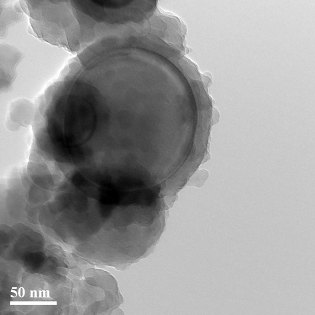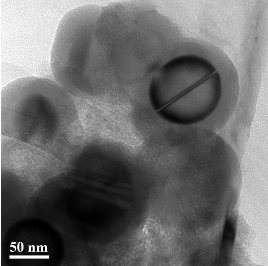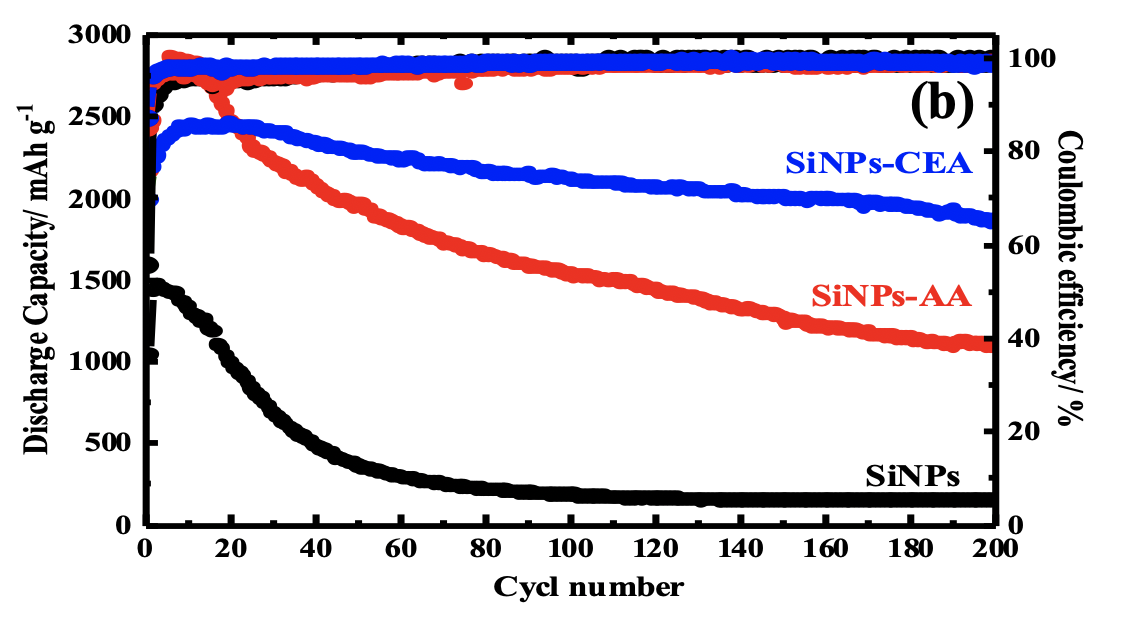| Technical Name | New geneeration ultra-high energy density lithium ion battery | ||
|---|---|---|---|
| Project Operator | National Taiwan University of Science and Technology | ||
| Project Host | 王復民 | ||
| Summary | Silicon has a very high energy density and high global reserves. However, the reaction mechanism of silicon and lithium ions is very different from that of graphite, and the volume expansion of the alloy after the reaction of silicon and lithium is rapid, which leads to the fact that the material is easy to crack and the new crack surface is easy to react with the electrolyte. By grafting a compound with unsaturated hydrocarbon and a carboxyl group on the surface of the silicon, through the design of this polymer brush, the silicon material can have very good electrochemical reactivity while suppressing volume expansion. In addition, the design of the polymer brush on the surface of the material can avoid excessive contact with the electrolyte, thereby reducing the problem of electrolytic solution cracking and forming too many passive films, so that the internal resistance of the battery can be significantly reduced, even including the suppression of the charge and discharge process. |
||
| Scientific Breakthrough | Silicon has a very high energy density, so it has always been a material that the industry is eager to commercialize. However, the reaction of silicon and lithium ions causes the volume of the alloy to expand rapidly, which leads to the cracking of the material and the resulting cracked surface easily reacts with the electrolyte. The above problems occur repeatedly, which ultimately leads to poor cycle life of the material and limited application. This technology can complete the improvement of the above problems and complete the development of ultra-high energy density lithium-ion batteries (> 1200 Wh / l). |
||
| Industrial Applicability | This technology will be used in all lithium-ion battery-related products, including 3C electronics, electric vehicles, electronic components that require high power, and energy storage. Especially for the design of the next generation of ultra-high energy density (> 500Wh / kg;> 1200Wh / l) lithium-ion battery, this battery will use high content silicon material as the negative electrode so that graphite/carbon and other materials commonly used in the past will be used Elimination will further reduce the global problem of carbon demand and emissions. |
||
| Keyword | Polymer brush Silicon Lithium-ion battery Electric vehicle Green energy Anode Hydrogen bonding Electric tool Energy density Life | ||
- mccabe@mail.ntust.edu.tw
other people also saw







